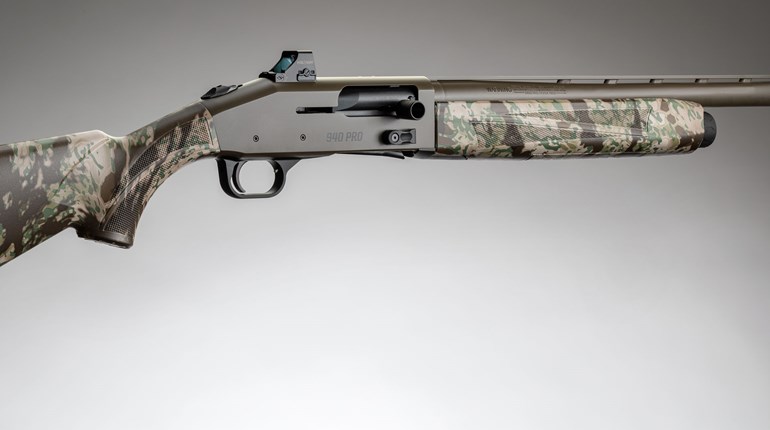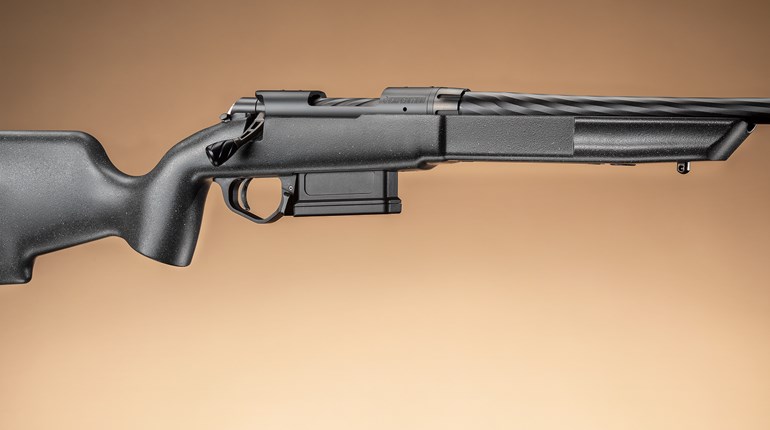
I sometimes admire the blissful folks who run into Walmart, grab the first box of 00 buckshot they spy, check to make sure the price isn’t insane, then return home with ammo that’ll serve them just fine. Unfortunately, I’m the type who wants to know exactly what’s in that box. Sure, it’s listed right there on the colored cardboard, but what’s it all mean? Here goes.
Gauge: If you’re not sure what gauge is, you need remedial reading, not Shooting Illustrated, but there are a few things the average shotgunner might not know. Gauge is an old English measurement of bore diameter that reflects the number of same-diameter pure-lead balls that equal 1 pound. For example, 12 gauge is .729-inch in diameter, so 12 solid-lead balls of .729-inch diameter equal 1 pound.
Gauge has little to do with the size of a shotgun’s pattern—that’s dictated by choke—but rather the pattern’s density potential. While a 10-gauge shell has the capacity to hold more shot and powder than a 12-gauge shell of the same length, it’s not always loaded to do so. That’s why you need to read the box and continue reading this.
Shot Size: This is the diameter of the individual pellet, collectively called shot. Pellet diameter is measured in inches, and therefore, if made of pure lead, like-diameter pellets have the same mass. Despite common myths, smaller-diameter pellets do not penetrate more than larger pellets travelling at the same velocity.
Ounce: The total weight of the payload, or pellets. It’s used for nearly all shot sizes except buckshot, which uses pellet count. For example, a 1-ounce load of 12 gauge No. 8 shot has about 410 pellets. (A 20 gauge with a 1-ounce payload of No. 8s has the same number.) A 1 1⁄8-ounce load has approximately 461. If all things are equal, a 1 1⁄8-ounce load would be deadlier and have more recoil than a 1-ounce load, but all things are not equal. It takes more powder to move 1 1⁄8 ounces of lead at the same velocity as a 1-ounce payload, and so if both loads have the same amount of powder, the 1 1⁄8 ounce load will have less velocity. This means that while its pattern density will be greater, the energy of its individual pellets at distance will be less. Same goes for buckshot loads that contain more pellets. That’s why you should pay attention to a box’s dram equivalent number (or velocity). Also, because metal is expensive, a greater payload means it’s usually priced accordingly.
Dram Equivalent: Centuries ago, shotshells were loaded with blackpowder measured in drams, 16 of which equal 1 ounce. After the advent of smokeless powder, loaders needed blackpowder-to smokeless-powder equivalencies, so the term dram equivalent was coined. It’s a measurement of the amount of powder in a shotshell. But because today there are myriad powders, this measurement is very rough. For example, a common 12-gauge dram equivalent for skeet loads is 33⁄4, whereas some heavy new loads contain 4½-dram equivalent. If the box says “Max,” it means it has the maximum amount of powder that the manufacturer feels is safe.
Regarding buckshot, many companies such as Winchester are thankfully now listing the load’s velocity, which is a product of the powder charge and the payload. In general, velocities around 1,100 fps often mean less powder and a milder-kicking load. Low-recoil buckshot loads (sometimes branded as “tactical” or “law-enforcement”) often feature 8 pellets instead of 9 to reduce payload mass and therefore recoil energy. Anything in the 1,300- to 1,400-fps range is considered high-velocity, or magnum.
Length/Pellet Count: Shell length determines the shell’s ability to hold more pellets and powder, although it doesn’t necessarily do so. Lengths range from Aguila’s new 1¾-inch “Minishell” to 10- and 12-gauge 3½-inch magnums. Generally, 12 gauge 2¾-inch shells hold nine to 12, 00-buck pellets; 3-inch shells hold 12 to 15 and 3½-inch loads like Remington’s Express Magnum hold up to 18. In general, longer length means more pellets, more energy, more recoil and less magazine capacity.
Lead: Nowadays shotgun pellets are made from lead, steel and numerous other alloys and elements, including heavier-than-lead tungsten, bismuth and other metals. The downside to these alternatives, however, is that they’re much harder than lead, so they do not expand in the target. They are also very expensive. For buckshot, stick with lead.
Buffered Shot: Refers to the presence of buffering material that prevents the pellets from colliding with each other at the moment of setback (firing) and therefore keeps them as spherical as possible, ultimately enhancing the load’s downrange pattern and energy. At close, home-defense type ranges, deformation is not critical. But for hunters or others who might take longer shots, pellet deformation can lead to erratic flight and reduced downrange performance.
Plated Shot: Copper-plating adds protection to soft-lead pellets that could otherwise deform upon setback. It also adds cost.






































